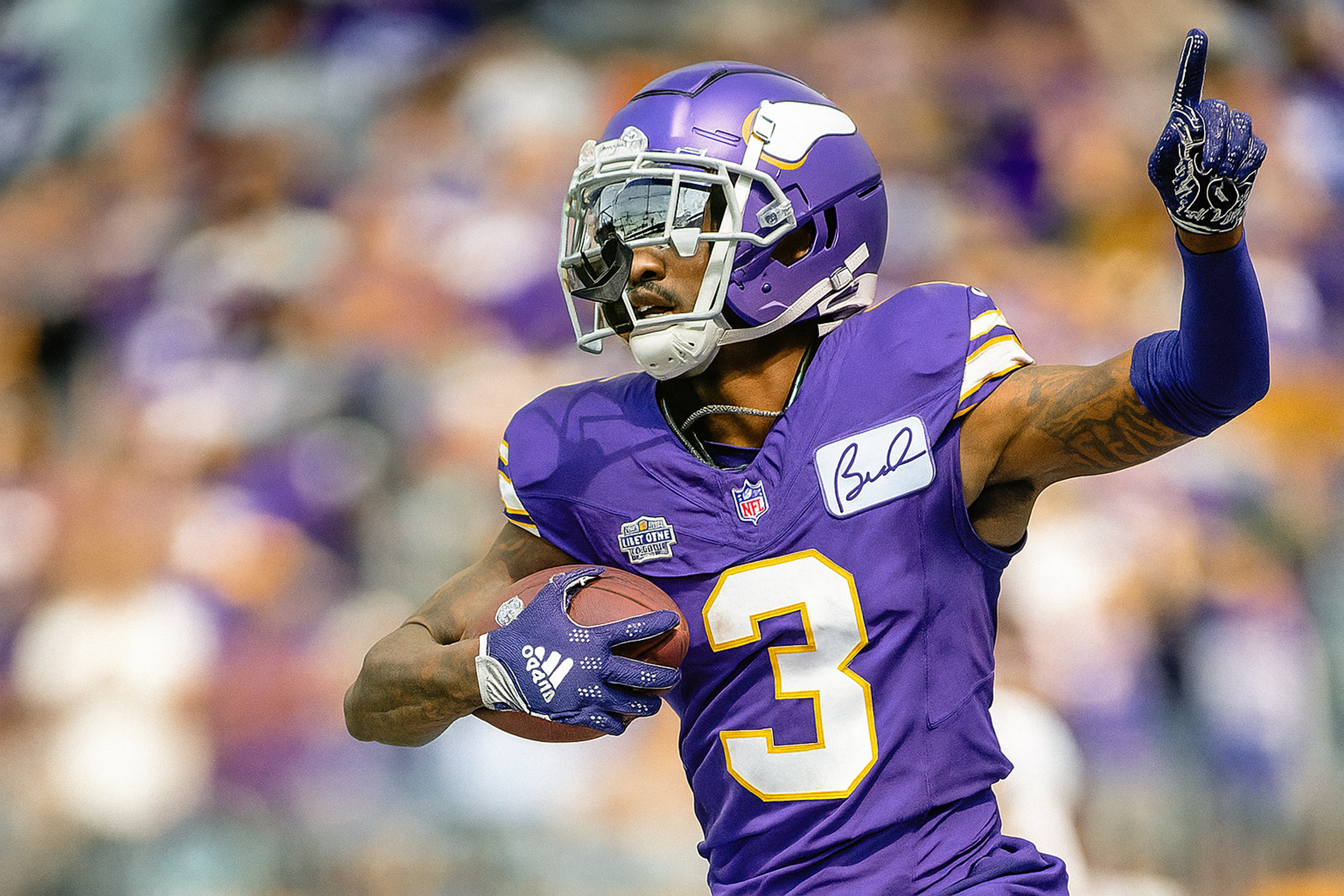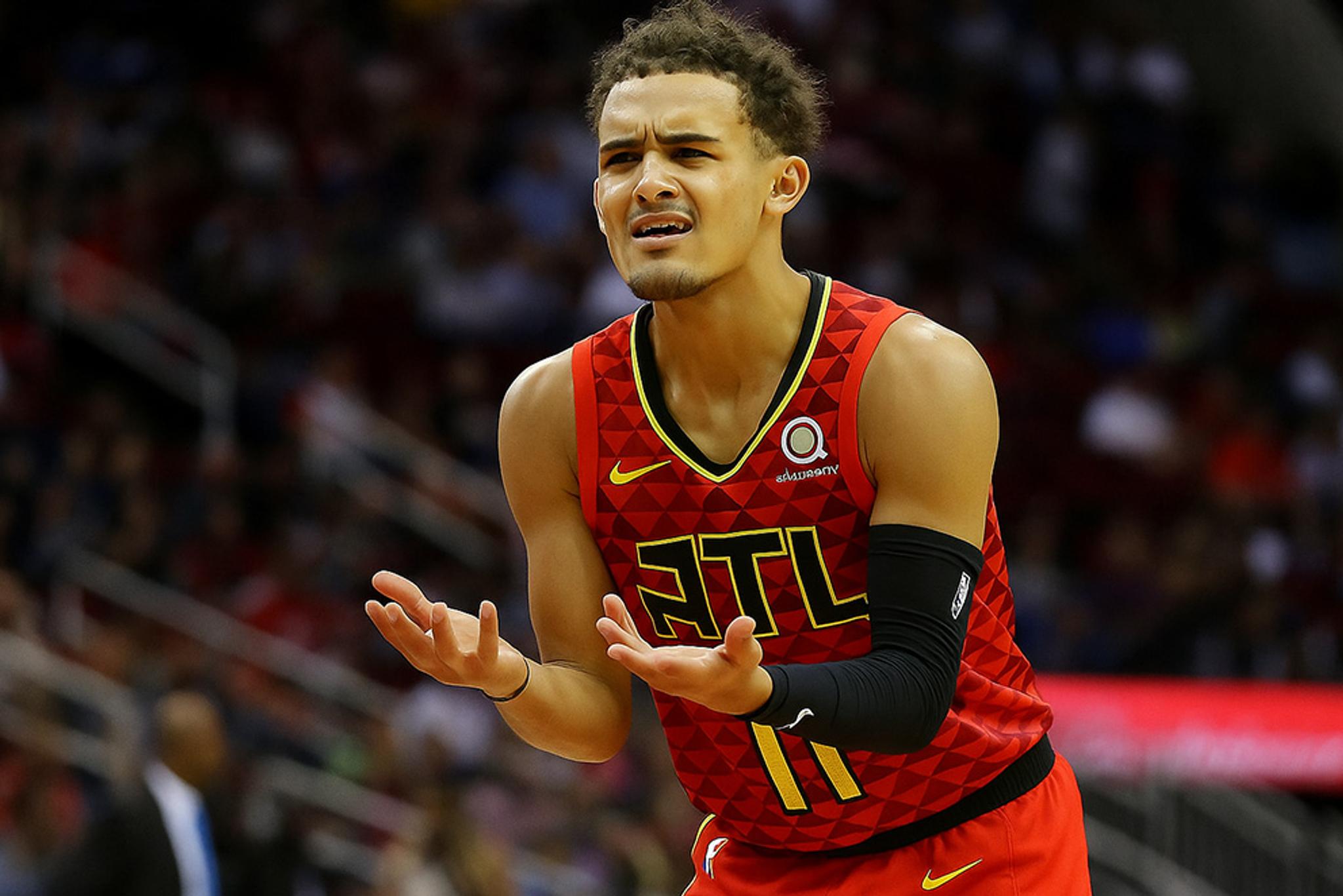The Suspension Surprise: Why Character Issues Create the Most Predictable Value


James White
Co-Founder of HotTakes
The notification hits your phone at 3:47 PM: "BREAKING: All-Star guard suspended indefinitely for conduct detrimental to team." Within minutes, the betting lines are in chaos. Casual bettors panic-sell the team's chances while sports talk radio explodes with hot takes about character and culture.
But while everyone else reacts emotionally, sharp bettors see something completely different: the most predictable value opportunity in sports betting.
Here's what most people miss about suspension news. It doesn't just change who's playing tonight. It creates a psychological earthquake that ripples through betting markets in ways that have absolutely nothing to do with actual game impact. Public perception shifts so dramatically and predictably that you can almost set your watch to the overreactions.
The result? Character-related suspensions generate more consistent betting value than injuries, trades, or coaching changes combined. Not because they're easier to predict, but because the market's emotional response follows such reliable patterns that professionals can position themselves ahead of the chaos every single time.
Why Character Crises Are Different from Everything Else
When a star player tears his ACL, the market reacts based on basketball impact. How many points does he score? What's his defensive value? Who replaces him? The analysis stays relatively logical, even if the execution isn't perfect.
But when that same player gets suspended for "conduct detrimental to the team"? Logic goes out the window. Suddenly everyone's a psychologist, culture expert, and team chemistry analyst. The betting market stops reacting to basketball and starts reacting to emotions, narratives, and moral judgments.
This emotional hijacking creates three specific advantages for systematic bettors:
Predictable Overreactions: Public sentiment swings dramatically based on how "bad" the character issue sounds, regardless of actual team impact.
Narrative-Driven Movement: Line movement follows media coverage rather than sharp money, creating obvious patterns for those who know what to look for.
Extended Correction Windows: Unlike injury news that gets processed quickly, character stories develop over days, giving patient bettors multiple entry points as the market sorts itself out.
The key insight? Most bettors can't separate their personal feelings about character issues from the mathematical reality of game outcomes. That emotional interference creates inefficiencies that last much longer than typical market mistakes.
The CRISIS Framework for Character Issue Analysis
Not all suspensions are created equal, and neither are the betting opportunities they create. The CRISIS method helps you systematically evaluate character-related news and identify where the market is most likely to overreact or underreact.
C - Character Investment Level (15 seconds)
The Key Question: How emotionally invested is the public in this specific player's image?
High Emotional Investment (Bigger Overreactions):
Franchise faces or beloved veterans
Players with previous squeaky-clean images
Stars on popular, high-profile teams
Players with strong social media followings
Low Emotional Investment (Smaller Market Impact):
Role players or bench contributors
Players with established troublemaker reputations
Athletes on smaller-market teams
Players already facing other controversies
When someone like a beloved team captain gets suspended, the public reacts as if the team's entire culture just collapsed. But when a known troublemaker faces the same suspension, the market barely flinches. The actual basketball impact might be identical, but the betting opportunity is completely different.
Current Example Pattern: Think about how differently the market reacts when a star point guard gets suspended versus a backup forward. The guard's suspension will move lines 3-4 points based purely on emotional response, while the forward's might not move the line at all despite potentially similar on-court value.
R - Replacement Readiness Assessment (10 seconds)
The Key Question: How prepared is the team to handle this specific absence, both practically and psychologically?
Team Resilience Indicators:
Strong veteran leadership beyond the suspended player
Coach with history of managing difficult situations
Deep roster at the affected position
Recent success playing without the suspended player
Vulnerability Signals:
Young team that relies heavily on suspended player's leadership
Coach facing pressure or lacking experience with crisis management
Thin roster depth at critical positions
Team already struggling with chemistry or performance issues
The market often focuses entirely on the suspended player's statistical impact while ignoring whether the team is built to survive the disruption. This creates huge opportunities when well-coached, deep teams get undervalued because their star player made a poor decision.
Professional bettors know that systematic approaches beat emotional reactions, especially when evaluating how teams respond to internal adversity.
I - Information Timeline Analysis (10 seconds)
The Key Question: Are you seeing this news early enough to beat the market adjustment, or are you already behind the curve?
Early Advantage Signals:
News breaking from team beat reporters rather than national media
Suspension announced outside of peak betting hours
Story developing gradually rather than exploding immediately
Limited initial reaction on social media and betting forums
Late to the Party Indicators:
Story trending on major sports networks
Lines already moved significantly across multiple books
Social media buzzing with reactions and takes
Other bettors already discussing value opportunities
Just like filtering breaking news for betting relevance, timing your response to character issues often matters more than the accuracy of your analysis. The best value comes in the first 30-60 minutes after news breaks, before emotional reactions fully price into the lines.
S - Severity vs. Perception Gap (15 seconds)
The Key Question: Is the public's emotional reaction proportional to the actual basketball impact?
Overreaction Opportunities (Public Emotions > Basketball Impact):
Off-court issues that don't affect game availability
Suspensions for team rule violations rather than legal problems
Character concerns that media amplifies beyond actual severity
Situations where player skill level exceeds their character reputation
Underreaction Spots (Basketball Impact > Public Emotions):
Suspensions involving less popular but highly productive players
Character issues on teams with limited media coverage
Situations where public focuses on drama instead of basketball loss
Cases where suspension affects multiple games but initial reaction is mild
The biggest profits come when you can identify gaps between how bad something sounds versus how much it actually affects the team's chances of winning basketball games.
I - Internal Culture Evaluation (5 seconds)
The Key Question: Does this suspension strengthen or weaken the team's internal dynamics?
Addition by Subtraction Scenarios:
Suspension removes a negative locker room presence
Team has been underperforming despite talent level
Other players publicly support the discipline
Coach's authority gets strengthened by decisive action
Culture Disruption Indicators:
Suspension divides the locker room
Timing disrupts important team building periods
Other players question management's decision
Suspension exposes broader organizational dysfunction
Sometimes the best bet is on a team that just got "worse" on paper but better in reality. Understanding psychological factors often trumps pure talent evaluation when character issues force internal recalibration.
S - Seasonal Timing Context (5 seconds)
The Key Question: When in the season is this happening, and how does that affect both team and market reactions?
High-Impact Timing:
During playoff races or tournament preparation
Early season when team chemistry is still developing
Around trade deadlines when roster decisions loom
During nationally televised game stretches
Lower-Impact Periods:
End of regular season with playoff position locked
Mid-season stretches with little at stake
During all-star breaks or natural team rest periods
When team is already eliminated from playoff contention
The same suspension can create completely different value opportunities depending on when it happens. A mid-February suspension during a playoff push generates much stronger emotional reactions than the same incident in early November.
The Three Types of Character Crisis Value
Type 1: Immediate Overreaction Fade (Most Common)
What It Looks Like: Beloved team captain gets suspended for arguing with coach. Line moves from -6 to -9 within two hours despite team having veteran backup and strong culture.
Why It Happens: Public emotionally overreacts to character disappointment, focusing more on the storyline than basketball impact.
Your Strategy:
Bet the "damaged" team immediately if you believe overreaction is severe
Target alternate lines that provide cushion against emotional movements
Focus on games within 48 hours when emotional impact peaks
Historical Pattern: Teams dealing with character adversity often play with extra motivation in their immediate next game, especially at home where they want to "prove something" to disappointed fans.
Type 2: Delayed Value Recognition (Advanced Play)
What It Looks Like: Role player with attitude problems gets suspended indefinitely. Initial line movement is minimal, but team goes on winning streak without the drama.
Market Dynamics: Public initially underestimates addition-by-subtraction scenarios, then slowly recognizes improved team chemistry.
Your Approach:
Monitor team performance in first 3-4 games without suspended player
Look for improved ball movement, defensive effort, or bench contributions
Target season-long futures if improvement appears sustainable
This connects to understanding that player props often reveal team dynamics that broader markets miss. When a disruptive player leaves, role players often step up in ways that create sustained value.
Type 3: Narrative Contradiction Spots (Highest Value)
What It Looks Like: Star player on struggling team gets suspended for "lack of effort." Media narrative focuses on team falling apart, but advanced metrics suggest team performs better without ball-dominant star.
Recognition Signals:
Team's recent struggles coincide with suspended player's increased usage
Supporting cast includes players whose skills complement each other better
Coach has history of success with more balanced offensive approaches
Strategic Approach:
Fade public perception that suspensions always hurt team performance
Target games where narrative contradicts analytical reality
Size these bets larger since market inefficiency can be substantial
The biggest character crisis profits come when you can identify situations where losing a "good" player actually makes the team better, even though public perception suggests catastrophe.
Sport-Specific Character Crisis Patterns
NBA Character Issues
Highest Value Situations:
Guard suspensions on teams with multiple ball handlers
Star player ego conflicts that affect ball movement
Veteran leadership suspensions on young, talented rosters
Market Tendencies: NBA betting public overvalues individual star impact and undervalues team chemistry factors, creating consistent opportunities when character issues force lineup changes.
NFL Character Crises
Most Predictable Patterns:
Skill position suspensions where replacement talent is available
Leadership suspensions on defensively strong teams
Character issues during short weeks or prime time games
Public Behavior: NFL bettors often confuse character concerns with competitive desire, missing that many "character issue" players are actually hyper-competitive individuals whose intensity gets misdirected.
College Sports Dynamics
Unique Opportunities:
Character suspensions often reveal recruiting over-reach situations
Young players' character issues frequently stem from adjustment problems rather than fundamental flaws
Team culture often stronger than individual impact, especially in successful programs
College markets tend to overreact to dramatic storylines while undervaluing coaching staff's ability to adapt and maintain system performance.
Building Your Character Crisis Action Plan
Immediate Response Protocol (First 30 Minutes)
Apply CRISIS Framework: Quick evaluation using all six factors
Check Multiple Books: Look for books that haven't fully adjusted lines yet
Assess Supporting Information: What are beat reporters saying about team reaction?
Position Size Appropriately: Larger bets on clear overreactions, smaller on borderline cases
Extended Monitoring Strategy (Days 2-7)
Track how story develops in local vs national media
Monitor team's public statements and practice reports
Watch for additional shoes to drop or situation resolution
Identify opportunities for live betting based on early game performance
Long-Term Pattern Recognition
Monthly Review Questions:
Which types of character issues create the most consistent value?
Are you better at identifying overreactions or underreactions?
How can you improve your information speed on breaking character news?
What team-specific patterns have you noticed in crisis responses?
This systematic review process prevents the kind of emotional decision-making that turns profitable character crisis strategies into costly guessing games.
Common Character Crisis Betting Mistakes
Mistake #1: Moral Judgment Interference
The Problem: Letting personal feelings about player behavior affect betting analysis.
The Solution: Separate character evaluation from basketball impact evaluation. Your job is predicting game outcomes, not judging personal conduct.
Mistake #2: Assuming All Suspensions Hurt Teams
The Problem: Missing addition-by-subtraction scenarios where team improves without problematic player.
The Solution: Evaluate team dynamics and role player capabilities, not just star power loss.
Mistake #3: Chasing Stale Character News
The Problem: Betting on character issues after emotional reactions are already priced into lines.
The Solution: Focus on breaking news advantages and avoid betting character stories that are more than 24 hours old.
Mistake #4: Ignoring Seasonal Context
The Problem: Treating all character crises equally regardless of timing and stakes.
The Solution: Scale your expectations and bet sizes based on when character issues occur during the season.
Understanding these pitfalls helps you avoid the reactive betting patterns that turn short-term setbacks into long-term problems.
Your Character Crisis Advantage Starts Now
Character issues will continue creating predictable betting value because they trigger emotional responses that overwhelm logical analysis. While other bettors get caught up in moral outrage or cultural commentary, you'll be systematically identifying where public sentiment diverges from basketball reality.
The CRISIS framework gives you a repeatable process for evaluating character-related news and positioning yourself ahead of market overreactions. Start applying this system immediately when character issues break, and begin building your database of team-specific and situation-specific patterns.
Remember that character crises often create multiple betting opportunities: immediate overreaction fades, delayed value recognition, and narrative contradiction spots. The key is staying systematic in your analysis while others get swept up in the emotional drama.
Most importantly, character issues represent one of the few betting edges that actually gets stronger over time. As social media amplifies emotional reactions and sports media focuses more on personality than performance, the gap between public perception and basketball reality continues to widen.
Ready to turn character chaos into systematic profit? Join the HotTakes community and share your biggest character crisis wins. We're all learning to separate the drama from the data together.
Continue the Journey
with More Expert
Insightsmore Articles

Steam vs. Mirage: How to Tell Real Line Movement from Market Noise in 60 Seconds
Real-Time Reactions
The Player Prop Goldmine: How Books Profit from Fantasy Football Thinking
Market Inefficiencies
The Confidence Cascade: Why Hot Streaks Lead to Cold Reality Checks
Mental Edge
The Closing Line Lie: Why Following 'Sharp' Money Isn't Actually Sharp
Market Inefficiencies